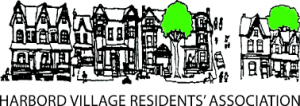A Neighbourhood Goes for Green

The Harbord Village Residents’ Association (HVRA) is aiming to imprint a great big collective green thumb on its neighborhood by replacing concrete and asphalt with plants, grass and trees.
Harbord Village, which is bordered by Bloor, College, Spadina and Bathurst Street, is a neighbourhood that while lush with greenery and private gardens has little public green space, except for three tiny parkettes. The residents’ group decided to approach the city about developing a green plan and with the input of the Harbord and Bloor Annex BIAs, the 2015 Harbord Village Green Plan was born.
“We’ve done the plan and now it’s a matter of mobilizing the community,” says Tim Grant, chair of the association. “We already have an active effort on Croft Laneway where neighbours there have already gotten together and planned three different plantings scheduled for this spring. It’s neighbours helping neighbours and I hope to use that as a model to encourage others.”
The 600-plus member association hooked up with city councilor Joe Cressy in addition to local BIAs to devise its plan, which includes the greening of street corners, laneways, planters and derelict and under-used areas in the neighbourhood.
The first plan of attack addresses the often unoccupied paved space where residential streets meet commercial strips along Bloor, Harbord and College. The green plan calls for planting opportunities at 13 different locations in which in-ground planting, raised container beds, bicycle parking and seating might be provided.
As Harbord Village is home to over 25 laneways, the plan calls for a number of initiatives aimed at improving and greening the neighbourhood’s network of corridors and passages, with current emphasis on Croft Laneway and Sussex Mews. These include encouraging neighbours to plant containers in free spaces next to garages or in paving gaps along building walls, hanging flowering baskets from light standards where appropriate, creating punctures along the centre of laneways and introducing resilient plant species, introducing vining along walls and fences and seeking opportunities for rain barrels and other catchments to provide water.
The plan recommends the replacement of pitchpoint planters. These concrete planters, many of which are marked with graffiti, are only marginally effective at slowing motorists. The residents’ group would rather see an in-ground pitchpoint, which allows ample space for plants, shrubs and trees. These in-ground street features effectively slow traffic and discourage graffiti.
The development of parks in under-capacity parking lots, abandoned recreational courts and sections of surplus lawn around apartment buildings all have potential when it comes to green space.
On May 18, the HRVA is holding its annual spring meeting at the Kensington Health Centre at 45 Brunswick Ave.
“We’re excited about this,” Grant says. “Now we need to get boots on the ground and make things happen.”